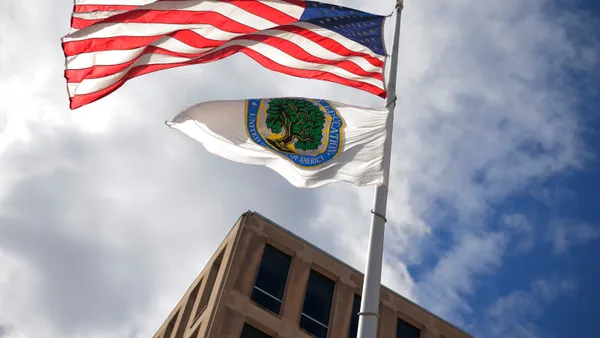Dive Brief:
- The expiration of federal pandemic emergency aid — which helped boost K-12 student digital access over the past few years — has state ed tech leaders concerned about longer-term efforts to close the digital divide, according to a report released Tuesday by the State Educational Technology Directors Association.
- According to SETDA, only 27% of states have plans to continue funding technology initiatives financed by federal COVID-19 relief programs. An overwhelming majority — about 92% — of school districts devoted some of their aid money to ed tech.
- To sustain connectivity improvements and enhance overall ed tech access, SETDA recommends adoption of local, state and federal policies and practices to remove internet affordability barriers, improve device maintenance, create a source of reliable funding, expand digital skills training for students and families, and implement safeguards for student and staff personal information.
Dive Insight:
"Universal connectivity is more than just internet access — it’s about addressing the digital divide to ensure every student is prepared for post-secondary success," Julia Fallon, SETDA executive director, said in a statement.
The group is calling for this universal connectivity in K-12 to ensure students have reliable internet while at school or home.
On- and off-campus access to broadband has improved in recent years due to programs like the Emergency Connectivity Fund, the Affordable Connectivity Program, and Elementary and Secondary School Emergency Relief, the association said. According to SETDA, 74% of districts provide internet access to schools at 1 megabit per second. That's up from just 8% in 2015.
Additionally, 85% of state education agencies reported working to improve broadband and device access over the past year.
But gaps still remain in universal connectivity, according to the 59-page report. In schools, those challenges can include lack of reliable connectivity, devices that are not compatible with current technologies, and cybersecurity vulnerabilities.
SETDA also said federal data reveals that many households, especially those with Black, Hispanic and Indigenous students or in rural areas, lack an internet subscription or device at home. It can be hard for low-income families to maintain internet subscriptions, the report pointed out.
To address these connection barriers — as well as challenges to digital inclusion and access — SETDA calls for:
- State and federal commitments from policymakers to support equitable access across K-12.
- Funding and technical assistance for schools to put inclusive digital tools into classrooms.
- Assurance that students can access ed tech tools and platforms that protect their data and include technical support for safe web navigation.
- Digital skill-building opportunities for students and their families, as well as sustained efforts for staff professional development and support for adopting artificial intelligence tools.
- A reliable funding program to support universal connectivity that is responsive to staffing needs, including preserving the Universal Service Fund and launching new initiatives under the Elementary and Secondary Education Act.








 Dive Awards
Dive Awards





